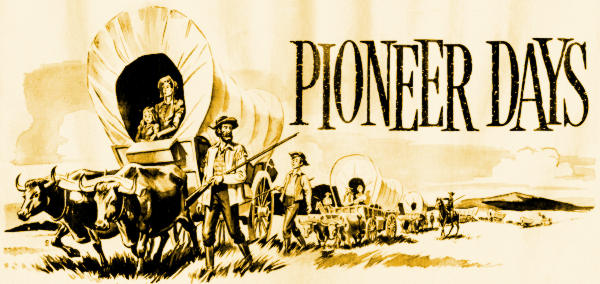|
GRUVER, Tex, - Karl A. Nielsen, 90-year-old Dane who now considers himself a pioneer of this small Texas Panhandle town, was 22 when he saw American shores for the first time on Sept. 13, 1901.
"This is country for me," he said to himself as the immigrant ship entered New York harbor. In those days the journey across the Atlantic lasted 20 days.
"I had a feeling to go away from home," he recalled. "I wanted adventure, and wanted to see the world." He left his family in Odense, Denmark,
Living conditions in Denmark were difficult in those days and the pay was low and the prices were high, Neilsen said.
When he arrived in New York he had only enough money to buy a loaf of bread, a few slices of bologna and a train ticket to Audubon, Iowa. After arriving in Audubon he had to borrow money for postage so he could write his family in Denmark.
Nielsen didn't know a word of English, but he had aspiration. It was, as he said recently, "working." Employed by a millionaire farmer near Audubon, he earned $20 a month and worked to improve his English.
In the spring of 1903, he moved to Nebraska to work for another farmer and an opportunity opened for him. His employer gave him permission to plant some potatoes. Nielscn marketed them for $80.
Renting a place near Takamah, Neb., Nielsen began farming on his own. Four years later, in 1912, he moved to near Goodwell, Okla., bought a farm and operat. ed it until the outbreak of World War I.
Nielsen volunteered for the Army and was placed in the Tex. as Cactus Division, 19th Infantry F Company. He returned to Goodwell in March 1919.
|
In 1924, he moved to the Tex. as Panhandle, settling just south of the state line near the Oslo community.
Nielsen worked. He never married. He prospered.
In August 1929 he bought a onesection farm 2 miles southwest of Gruver, and in October of that year he built his present home, surrounding it with about 100 evergreens and a number of Chinese elms. His homesite today is a wooded area.
Karl Nielsen, who was 90 on Dec. 3, 1969, operated the farm until 1957, when he rented half of the section to George P. Odom
of Gruver, He farmed the other half until he was 85 in 1965 and then he rented it to Odom also.
His home is a reminder of his Thoreau-like love for simplicity. Nielsen prefers to be without television at the home.
Nielsen's activity did not cease with his retirement. He paid for building the Gruver library and dedicated it to the City on April 17, 1966.
This was not Nielsen's only philanthropy.
In 1958 he gave his extensive collection of antique furniture and weapons to the Amarillo, (Tex.) Police Department, where it is on display in a museum addition to the police station which Nielsen helped finance.
"Most American people just want to knock the police in the head," Nielsen said. "I want to give them something."
|
He was impressed on several occasions by the courtesy of the Amarillo police. He said they have treated him kindly over the years.
Four centuries of firearms history are represented in the Nielsen Museum of antique arms and furniture, dedicated in early 1959.
Among the firearms in the extensive collection, valued at more than $10,000, is a .66 caliber Spanish flintlock pistol with gold, silver and mother-of-pearl inlay. The gun was made in the 15th Century. Another gun from that period is a so-called "pirate pistol" with which Great Britain armed its sailors to battle sea marauders.
A saber and bayonet abandoned in Russia during the 1812 Retreat of Napoleon's army are also displayed in wall cases. The collection includes weapons from the nation's major wars and from the settling of the West.
"I told them when I go up to Heaven I can't take it with me," Nielsen said of the collection.
He commented on his bachelorhood: "I didn't marry, because I didn't want to hurt the other girls' feelings. They seemed nice."
Nielsen still drives his auto on routine trips to the city, is in good health and likes working around his home, repairing things and making furniture. He also has a sizable library at home and enjoys reading.
One of his neighbors said that in Nielsen's younger days "he would start working before daylight and continue until dark."
His 80-year-old sister, Karen, takes care of the home and helps her brother.
Nielsen takes pride in being an American citizen. Near his home he has a tall flagpole for the American flag, which lie flies regularly.
|
